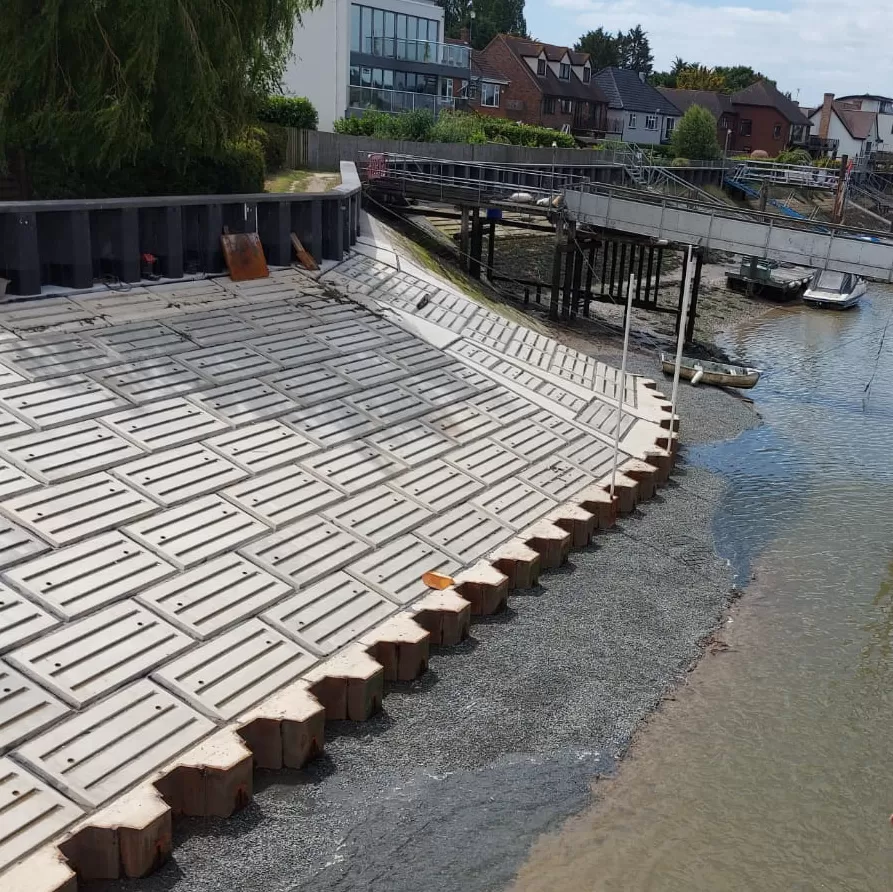Anti-slip circle installed to overcome embankment slippage
Along the tidal estuary of the River Crouch in Essex, a 40 metre length of embankment had slumped at Hullbridge, requiring repairs to damage caused by the tide.
Ivor King installed over 100 permanent steel sheet piles to form an ‘anti-slip circle’, which also provided a safe working environment for repairs to take place in the form of a cofferdam.
Overcoming limited access and tidal flow
Landward access to the site was not possible due to the close vicinity of neighbouring properties. Owing to their close proximity, the solution had to be silent and vibration-free to limit disturbance, whilst also overcoming challenging ground conditions.
In addition, the work area was subject to tidal flow, which necessitated a jack-up barge to be deployed for piling operations to be carried out.
A jack-up barge is a floating platform with movable legs which can be lowered into the sea bed. The legs anchor the barge so that the platform can then be ‘jacked up’ to clear the waterline, counteracting any movement caused by tides and passing vessels.
The only viable installation method that satisfied all criteria was Giken Supercrush – a vibration-free piling technique used for hard ground conditions, whereby augering takes place at the same times as piles are being pressed-in.
The Giken Silent Piler uses reaction force to install piles. However, working from a jack-up barge meant the initial reaction piles could only be installed by welding the Giken reaction stand to the platform of the barge. Once the starter piles were in-situ, the silent piler could carry out installation in the usual manner, clamped on top of previously installed piles.
Grouting the voids
The sheet piles, up to 15 metres in length, were also grouted to seal any voids – the grout was pumped from a nearby on-shore mixing plant during periods of low tide.
Once installed, remedial work could take place in safety, protected by the sheet pile cofferdam. Following the completion of works to fit new revetment blocks to the embankment, the sheet piles were cut down to form the anti-slip circle that guards against future slippage.















